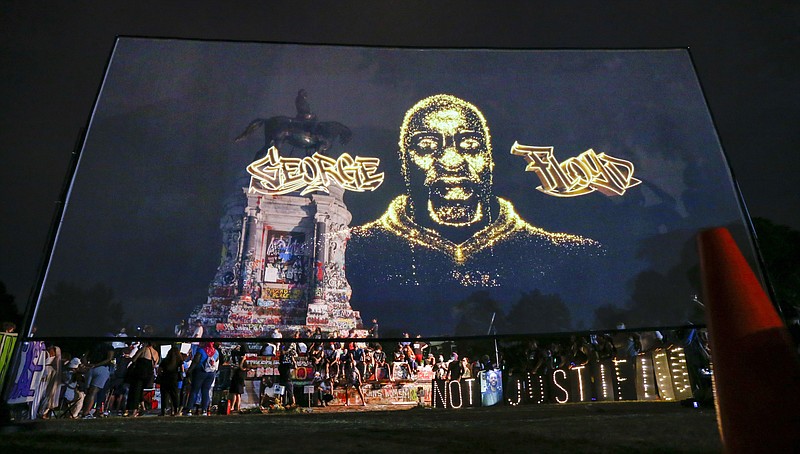Much has been made in this presidential election campaign of the unrest in large cities this summer following the May death of Black suspect George Floyd while in custody of white Minneapolis police officers, and much more is likely to be made of it before the Nov. 3 votes are certified.
Voters, of course, must answer for themselves whether they feel safer than they did before, and how those feelings might affect their vote.
Data from the National Crime Victimization Survey (NCVS), taken yearly and released Monday, has a little something for everybody. It is one of two programs the Department of Justice uses to measure the magnitude, nature and impact of crime in the nation. The other is the Uniform Crime Reporting Program.
The NCVS information, the nation's largest crime survey, includes statistics only through 2019.
If you're looking for good news, the number of U.S. victims of violent crime - excluding simple assaults - saw a statistically significant drop in 2019 for the first time since 2015. If you're looking for not so good news, the nearly 30-year-long crime decline almost assuredly has plateaued.
Whether you view the crime information through a half-full or half-empty perspective, people today are worried. In a recent Harvard CAPS/Harris poll, 77% said they are concerned that crime is now rising in the nation's cities.
Unfortunately, even the good news in the survey must be tempered a bit.
When simple assaults are included in the number of violent crimes, no statistically significant change in the rate of violent crime from 2018 to 2019 was seen.
That fits with other reports, one by Gallup indicating for the first time 3% of U.S. adults in 2019 said they were victims of violent crime and one by the Major Cities Chiefs Association saying 2019 saw a rise in homicides and aggravated results that were reported.
Nevertheless, according to the NCVS, rape or sexual assault victimizations fell from 2.7 per 1,000 people in 2018 to 1.7 in 2019; property crime fell from 108.2 victimizations per 1,000 households in 2018 to 101.4 in 2019; and 29% fewer Black people and 22% fewer white people were victims of serious crimes from 2018 to 2019.
However, the survey, which collects data on nonfatal crimes both reported and not reported to the police, showed that fewer than half (41%) of victimizations were reported to police.
Of the 5.4 million total violent incidents involving victims ages 12 and up, white people were victims in 62% of the cases, Hispanics in 17%, Blacks in 11% and Asians in 2.3%. But, white offenders were responsible for 50% of the incidents, Blacks 25%, Hispanics 19% and Asians 1% of the incidents.
The crime statistics aside, the plateaued crime decline may be more alarming.
That decline over the last decade lent credence to criminal justice reform, but the plateau may indicate further thought needs to be given reforms, especially in light of this's summer violence.
Between 1993 and 2009, the violent crime victimization rate fell 73%, but it only has fallen 6% since. Indeed, since that year, while the year-over-year rates have risen and fallen slightly, the annual violent victimization rate has remained around 7.6% per 1,000 people, according to an analysis by the Washington Free Beacon.
Criminologist don't agree on exactly why the crime decline occurred - their theories ranging from the waning demand for crack cocaine to the decline in children's exposure to lead - but Bureau of Justice statistics say their levels still remain equal to or higher than the 1960s, which is when the crime wave that peaked in 1992 began.
And now the assumption from experts is that the 2020 numbers, out around this time next year, will show an increase.
Although crime decreased during the lockdowns over the coronavirus earlier this year, a spate of violent crimes followed the Floyd death and continue today. According to The Crime Report, a University of Missouri study measuring post-lockdown crime in May and June reported that homicides were up 37%, aggravated assaults up 35% and robberies up 27%.
Though crime statistics can be maddeningly confusing, what's clear to us is that any good news from the 2019 numbers will likely be canceled by the 2020 figures. And that the long crime decline is not on target to go lower but could turn back up if police departments are defunded, prisons are further emptied, and law and order are no longer considered important.
So, yes, a few more words might be spilled during this campaign about the unrest this summer. And some of them might just turn on a light switch for a voter or two.
